S. M Mehedi Zaman
OOG- Optuna Optimized GAN Sampling Technique for Tabular Imbalanced Malware Data
Nov 25, 2022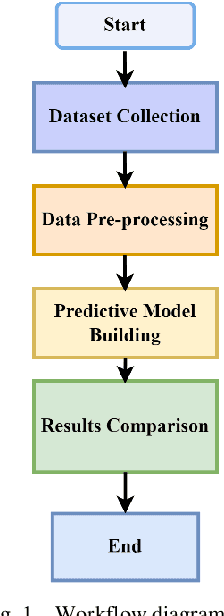
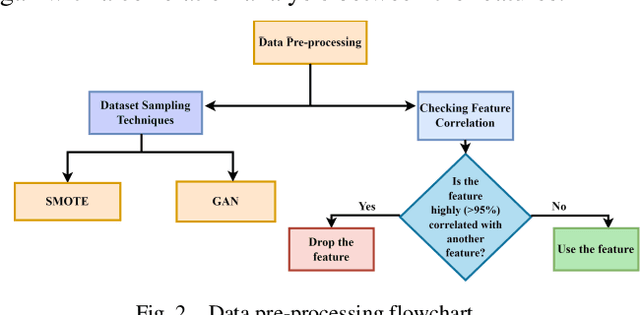
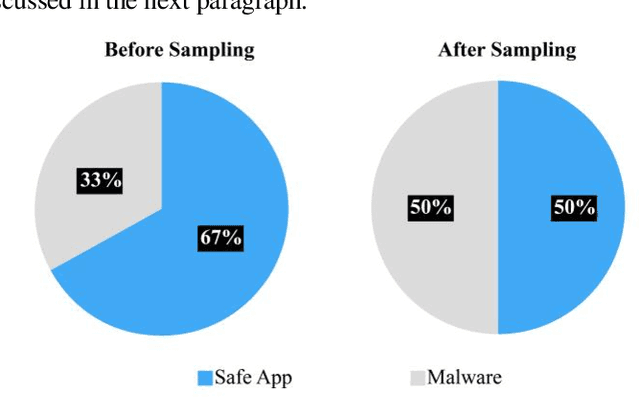
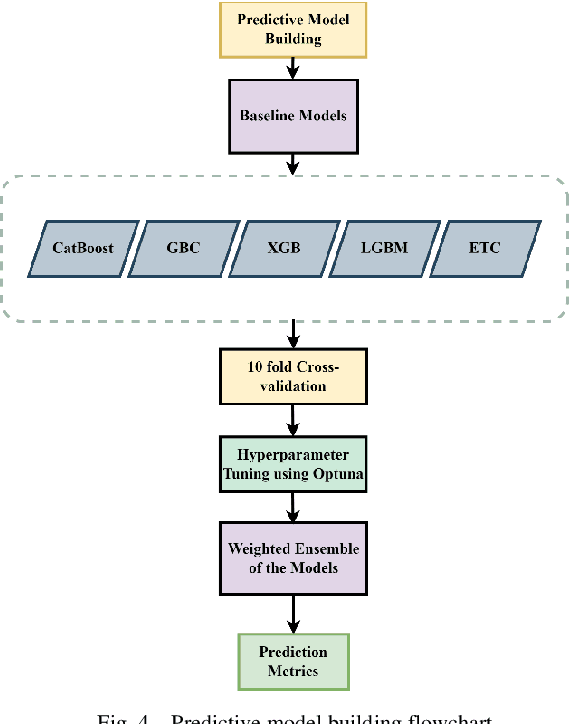
Abstract:Cyberspace occupies a large portion of people's life in the age of modern technology, and while there are those who utilize it for good, there are also those who do not. Malware is an application whose construction was not motivated by a benign goal and it can harm, steal, or even alter personal information and secure applications and software. Thus, there are numerous techniques to avoid malware, one of which is to develop samples of malware so that the system can be updated with the growing number of malwares, allowing it to recognize when malwares attempt to enter. The Generative Adversarial Network (GAN) sampling technique has been used in this study to generate new malware samples. GANs have multiple variants, and in order to determine which variant is optimal for a given dataset sample, their parameters must be modified. This study employs Optuna, an autonomous hyperparameter tuning algorithm, to determine the optimal settings for the dataset under consideration. In this study, the architecture of the Optuna Optimized GAN (OOG) method is shown, along with scores of 98.06%, 99.00%, 97.23%, and 98.04% for accuracy, precision, recall and f1 score respectively. After tweaking the hyperparameters of five supervised boosting algorithms, XGBoost, LightGBM, CatBoost, Extra Trees Classifier, and Gradient Boosting Classifier, the methodology of this paper additionally employs the weighted ensemble technique to acquire this result. In addition to comparing existing efforts in this domain, the study demonstrates how promising GAN is in comparison to other sampling techniques such as SMOTE.
Survival Prediction of Heart Failure Patients using Stacked Ensemble Machine Learning Algorithm
Aug 30, 2021
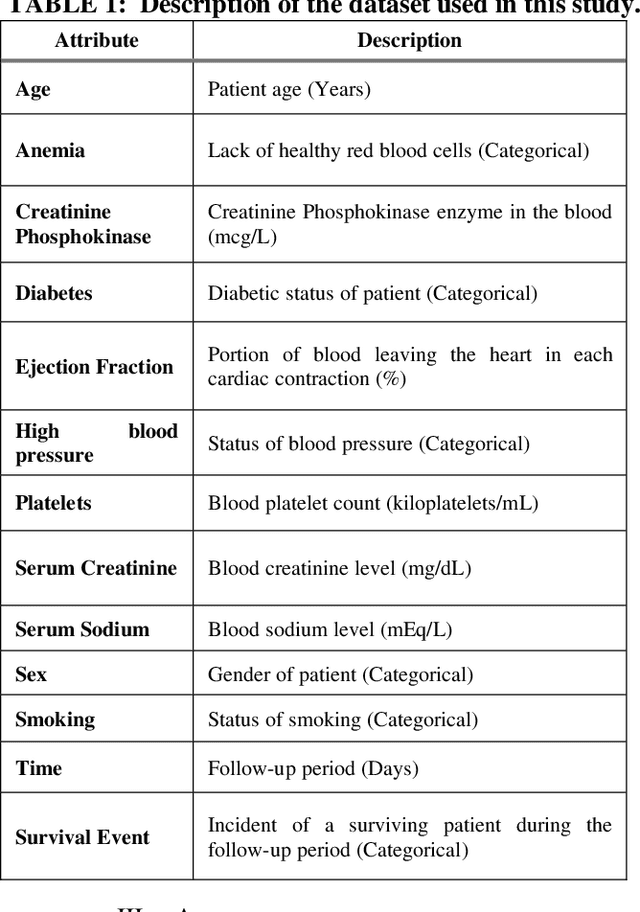
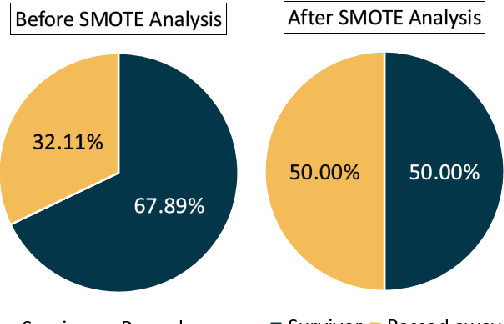
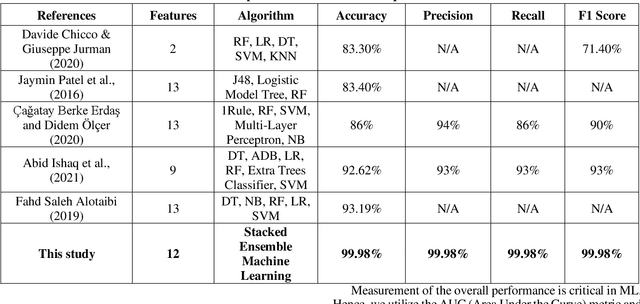
Abstract:Cardiovascular disease, especially heart failure is one of the major health hazard issues of our time and is a leading cause of death worldwide. Advancement in data mining techniques using machine learning (ML) models is paving promising prediction approaches. Data mining is the process of converting massive volumes of raw data created by the healthcare institutions into meaningful information that can aid in making predictions and crucial decisions. Collecting various follow-up data from patients who have had heart failures, analyzing those data, and utilizing several ML models to predict the survival possibility of cardiovascular patients is the key aim of this study. Due to the imbalance of the classes in the dataset, Synthetic Minority Oversampling Technique (SMOTE) has been implemented. Two unsupervised models (K-Means and Fuzzy C-Means clustering) and three supervised classifiers (Random Forest, XGBoost and Decision Tree) have been used in our study. After thorough investigation, our results demonstrate a superior performance of the supervised ML algorithms over unsupervised models. Moreover, we designed and propose a supervised stacked ensemble learning model that can achieve an accuracy, precision, recall and F1 score of 99.98%. Our study shows that only certain attributes collected from the patients are imperative to successfully predict the surviving possibility post heart failure, using supervised ML algorithms.
 Add to Chrome
Add to Chrome Add to Firefox
Add to Firefox Add to Edge
Add to Edge